
Graph all the things
analyzing all the things you forgot to wonder about
Announcing a Store!
2025-07-29
interests: infographics, design, posters
Graph all the Things now has a store on Redbubble you can buy stuff from, and most things are on sale now! The main attraction: map projection posters! Here's an example scaled-down version (the full versions are >100 megapixels each):

And largely to meet the 5-design requirement for Redbubble, I threw in the Pco logo. You can now buy it on more products than I imagined possible:


Map Projection Improvements
I actually put a ton of work into sprucing up the map projection posters. To begin with, I scaled up each projection's lattice, going from 36,000 triangles to 1,897,344. This required making some code much quicker, such as computing the proportion of each triangle that is over water. It also spurred me to rent GPUs from Lambda Labs and make my training code more GPU-amenable. But the reward was worth it: smoother-looking projections, especially near the poles.
In that same vein, I souped up the images I was working with. I downloaded NASA images as large as 933 megapixels as sources, and I made my own composite from their land topo plus their bathymetric data. I made a new color scheme for the oceans based on depth that IMO makes the image prettier and more informative:
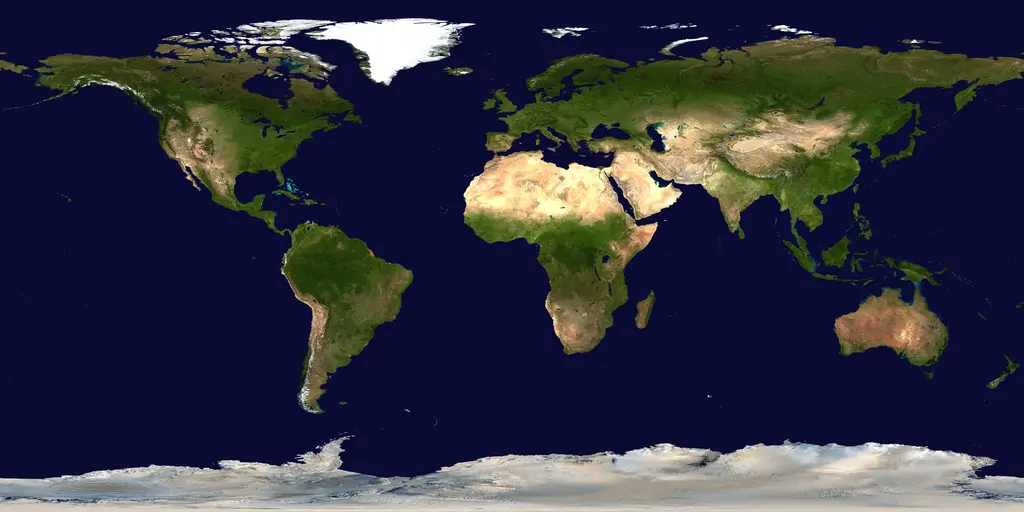
after: 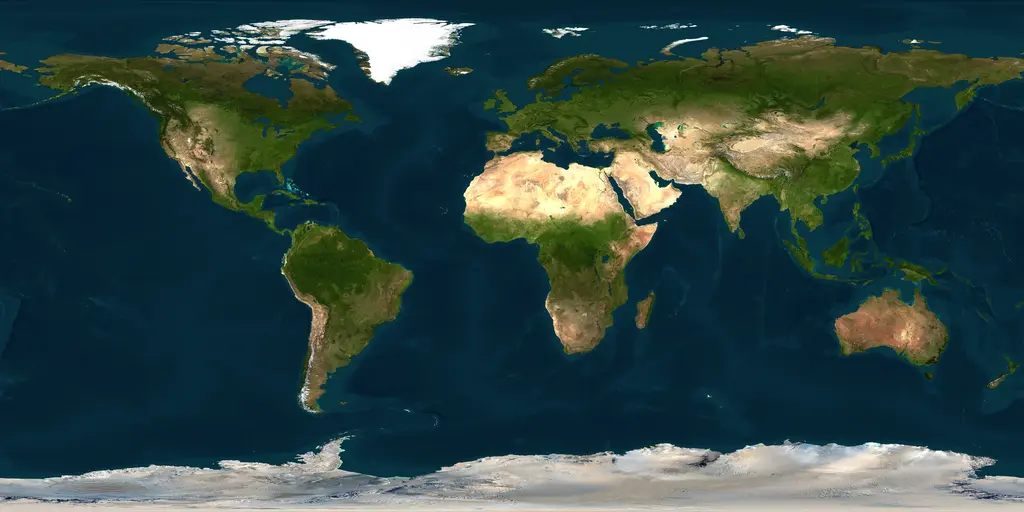
Also, I had to build some new tools to make visualizations. For instance, I can now draw Tissot's indicatrices and lines of latitude and longitude:
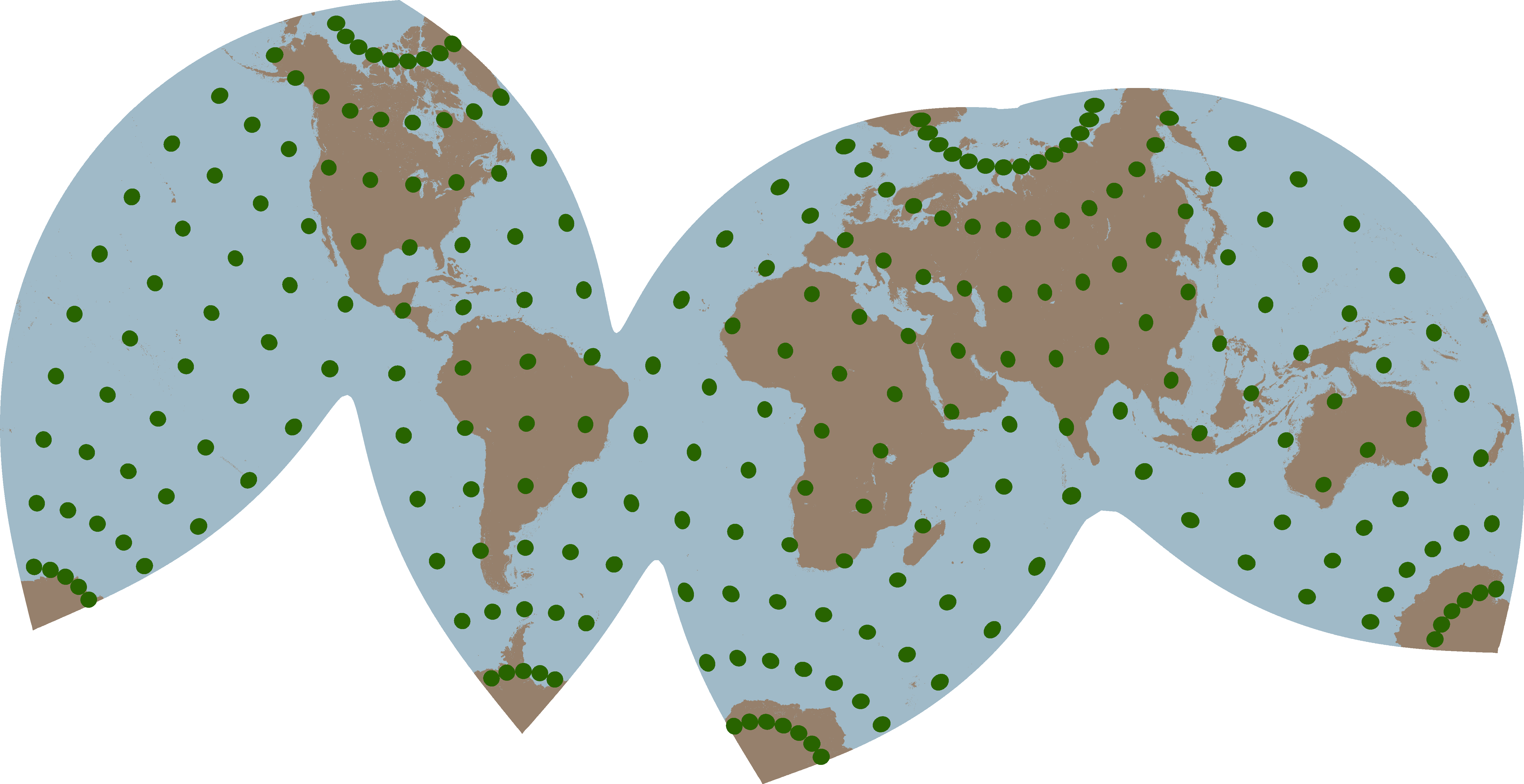

Last, I got help from a graphic designer friend of mine, Chris Paolini (not the Eragon author), to make the posters worthy of occupying space on a wall. Here's the standard poster, before and after getting his help (with the bathymetric data improvement as well):
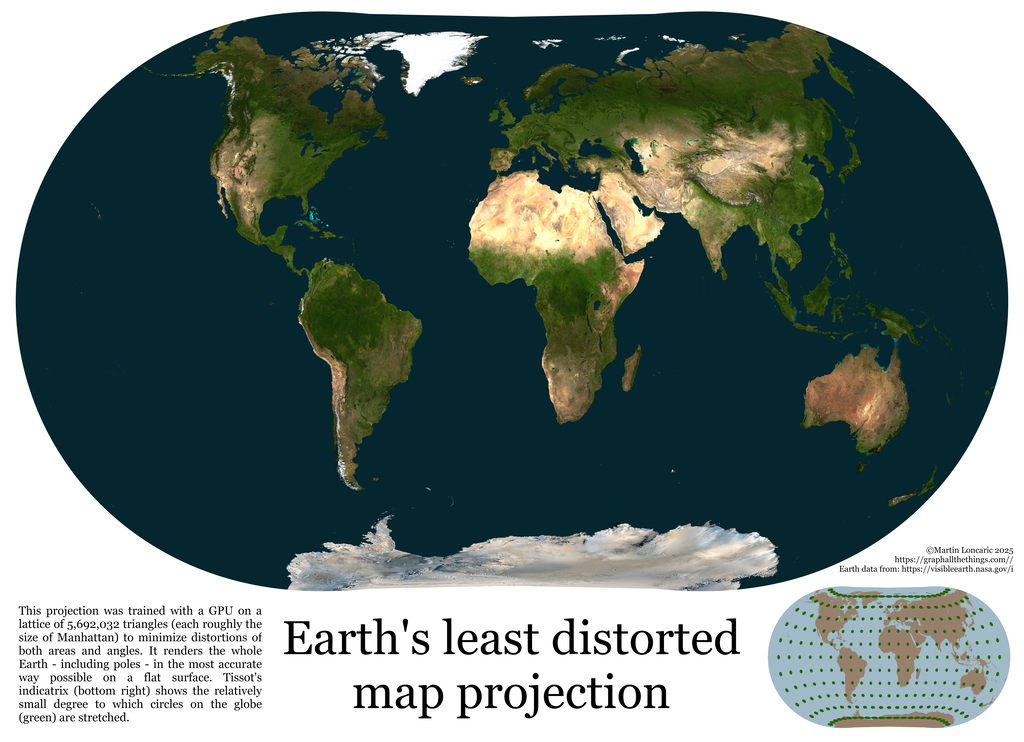
after: 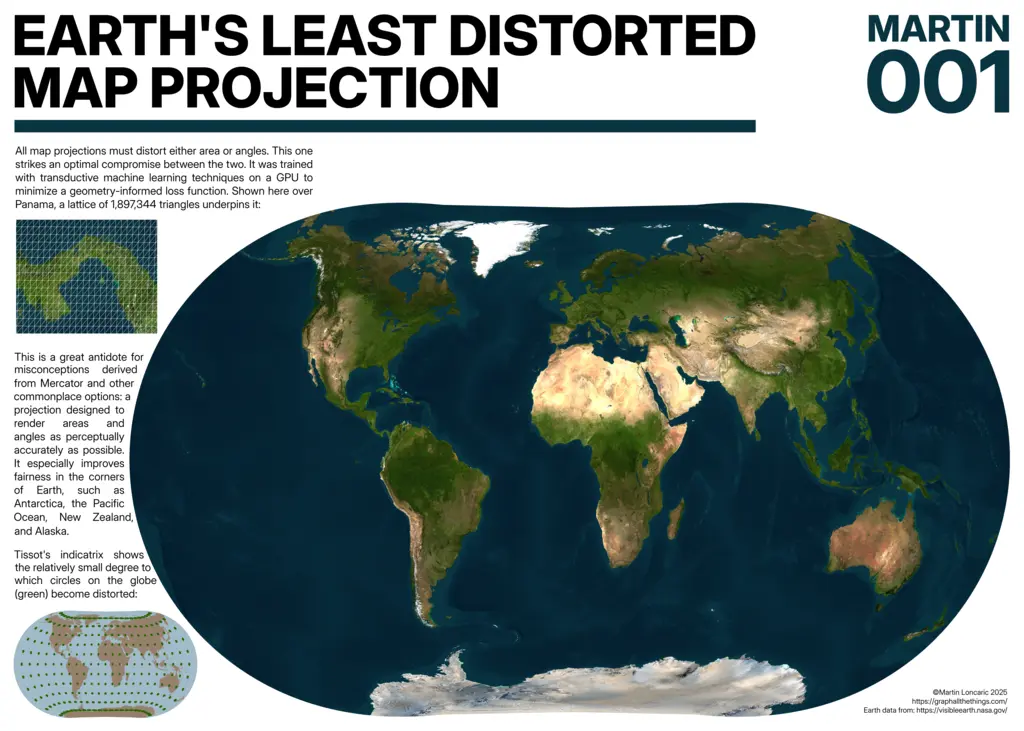
I credit most of the posters' good looks to him. Any shortcomings they may have are entirely my own.
Anticipated Questions
Q: Do you expect this to be a side hussle?
A: No, I think it's very unlikely to bring in much money. But I wouldn't mind being proven wrong!
Q: I want one poster but you have three. What should I do?
A: Just buy the one that interests you most; each is designed to be good on its own.
Q: What's next?
A: Depending on how it goes, I'll either stop here or design Mars posters and some other variations in the future.
The available Mars data is actually clunkily big (5.7 terapixels), so it would be another mini project.